On September 2, 2022, with the participation of Indian Prime Minister Narendra Modi in Cochin, the Indian State Shipbuilding enterprise Cochin Shipyard Limited (CSL) hosted the ceremony of commissioning the first aircraft carrier of the Indian national construction R 11 Vikrant into the Indian Navy. During the ceremony, a new Indian naval flag was raised on the aircraft carrier for the first time, designed to replace the British-style naval flag with the George Cross used since 1950.
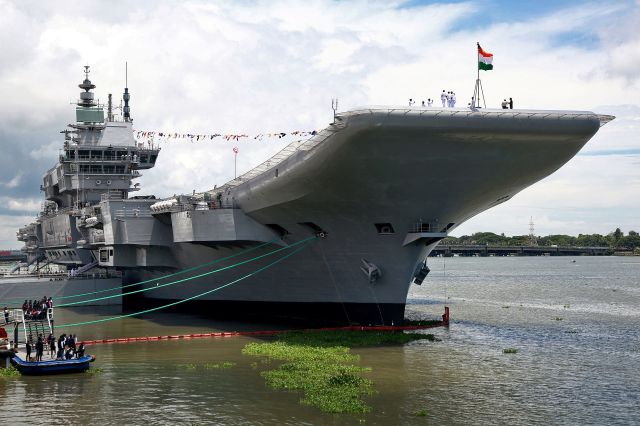
Commissioned by the Indian Navy, the first aircraft carrier of the national Indian construction R 11 Vikrant. Cochin, 02.09.2022 (c) V. Sivaram / ReutersThe aircraft carrier R 11 Vikrant was built under the Indigenous Aircraft Carrier (IAC) program and inherited the name and tail number in honor of the first Indian aircraft carrier R 11 Vikrant (formerly the English Hercules), which was part of the Indian Navy from 1961 to 1997.
The ship is expected to reach the initial combat readiness stage by the end of 2023. The new Vikrant became the second aircraft carrier in the current composition of the Indian Navy, along with the aircraft carrier R 33 Vikramaditya (former "Admiral of the Fleet of the Soviet Union Gorshkov").
The program of building two aircraft carriers on its own was adopted in India back in 1988. The development of the project was carried out intermittently by the Directorate of Naval Design The Indian Navy since 1989, however, the actual full-scale development of Project 71 under the Air Defense Ship (ADS) program, then renamed the Indigenous Aircraft Carrier (IAC), was started in 1999. The Italian shipbuilding association Fincantieri actually played a leading role in the design of the ship under the concluded contracts, and the Russian JSC Nevsky Design Bureau took an active part in the development of the aircraft and technical part of the ship. The project was formally approved by the Government of India in January 2003, but subsequently it was repeatedly finalized, which, in particular, led to an increase in the standard displacement of the ship from 37.5 to 40 thousand tons.
The construction of the IAC-I ship was started at Cochin Shipyard Limited (CSL) in Cochin in 2008, the formal laying took place on February 28, 2009. The construction of the ship was repeatedly interrupted and went with a significant delay from the schedule and exceeding the cost of the program, as a result of falling behind the original planned deadlines by about seven years. The hull of the ship was removed three times during construction ("launched") from CSL dry construction dock. For the first time, the ship's hull was removed from the dock on December 29, 2011 for technological reasons in order to free up the dock for launching a commercial vessel under construction. For the second time, the aircraft carrier was removed from the construction dock on August 12, 2013 during the "baptism" ceremony, when it was named Vikrant. The ship was taken out of dry dock for the third time on June 10, 2015 during the "final" launching ceremony, after which it was completed afloat for another six years.
The new Vilkrant put to sea for the first time for factory sea trials from Cochin on August 4, 2021. The signing of the ship's acceptance certificate by the Indian Navy took place on July 28, 2022. The total cost of the construction of the ship is estimated by Indian sources at 23 thousand crores of rupees (about $ 4 billion), and, apparently, without taking into account the cost of design.
Vikrant has, according to the latest data, a standard displacement of about 40 thousand tons and a total displacement of more than 45 thousand tons. The maximum length of the ship is 262 meters, the maximum width is 62 meters and the draft is 8.4 meters. The main power plant is a gas turbine, includes four General Electric LM2500+ gas turbines with a capacity of 40,500 hp each, operating through two Elecon gearboxes on two shafts. The full-speed speed should be 30 knots, the cruising range of the economic course is allegedly 8000 miles. The full-time crew of 1,645 people, including the air group.
The ship uses a springboard for aircraft takeoff and must carry an air group consisting of MiG-29K/KUB fighters, Naval Tejas, Ka-31 RLDN helicopters, MH-60R anti-submarine helicopters and Dhruv search and rescue helicopters (up to 26 fighters and 10-14 helicopters in total). Aerotechnical equipment, including aerial finishers, of Russian production.
The Vikrant electronic armament includes an Indian-designed CMS automated control system, an Israeli IAI Elta EL/M-2248 MF-STAR radar system with four fixed AFAR antennas, a Leonardo RAN-40L general detection radar, and an Indian Shakti electronic warfare system. The defensive armament on the ship, apparently, has not yet been installed, but, according to earlier reports, it should include 64 vertical launchers of the Israeli medium- and long-range Barak 8 SAM, four 76-mm Leonardo Super Rapid universal artillery launchers and four 30-mm AK-630M six-barrel artillery launchers.
As for the new naval flag of India, which was first raised on the ship during the commissioning ceremony of the new aircraft carrier Vikrant, the British red St. George's cross was replaced on a white field with a golden octagonal emblem with a dark blue background, including the coat of arms of India (the capital with lions from the Ashoka column), anchor and motto Indian Navy in Sanskrit "Sam no Varuna" ("May Varuna be kind to us" is a mantra from the Vedas; Varuna is a Hindu sea deity).
Indian Prime Minister Modi announced that the new flag is dedicated to Chhatrapati Shivaji, the founder of the Hindu Maratha empire in the XVII century, who also created the navy. Modi stated: "Today, on the historic date of September 2, 2022, another event occurred that changed history. Today, India has shed the trace of slavery, the burden of slavery. From today, the Indian Navy has received a new flag. Until now, the symbol of slavery remained on the flag of the Indian Navy. But from today, inspired by Chhatrapati Shivaji, the new naval flag will fly in the sea and in the sky."
It should be noted that in 2001-2004 an attempt was already made to replace the Indian naval flag - then a blue combination of the coat of arms of India with crossed anchors was placed in a white field, but in 2004 the St. George Cross was returned, and the Indian coat of arms was placed small in the center of the cross.
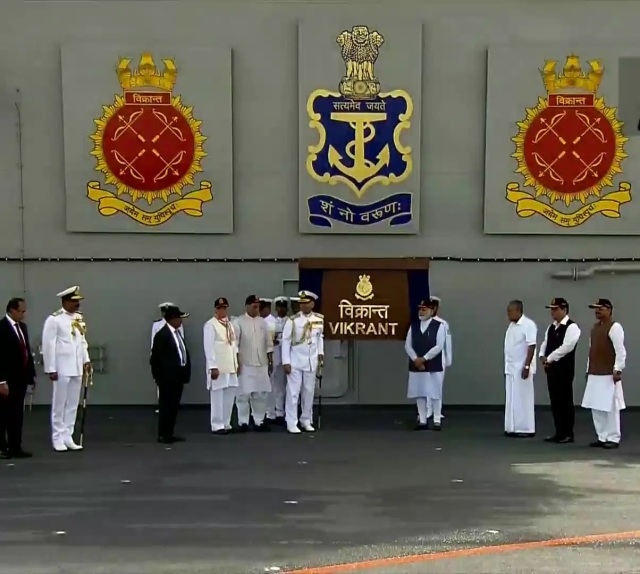
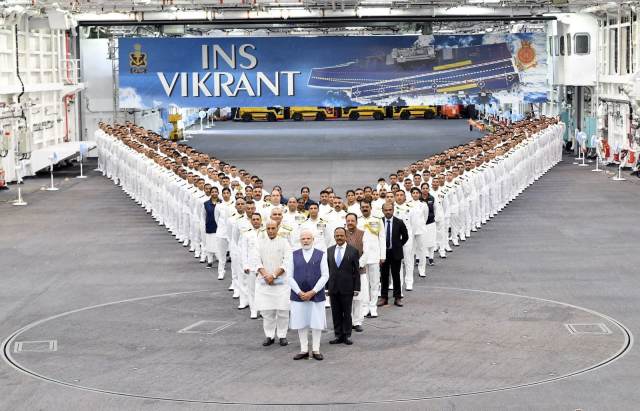
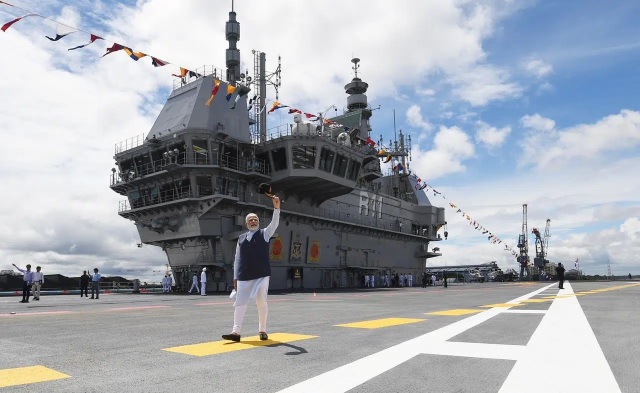
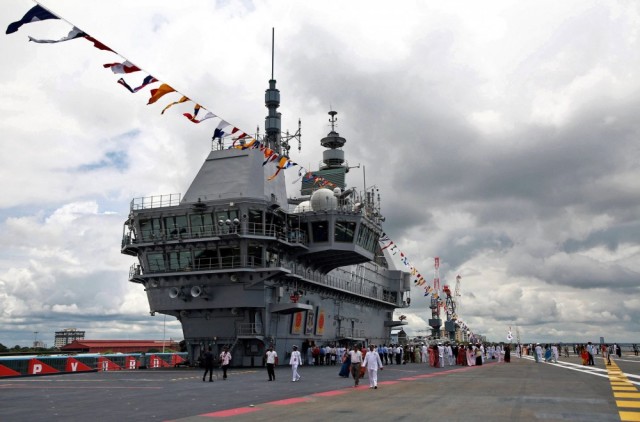
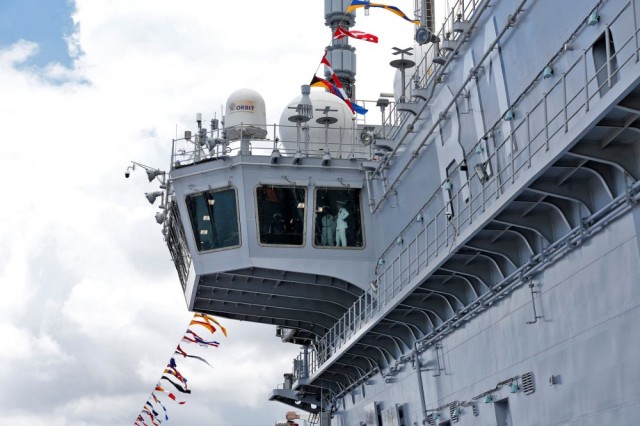
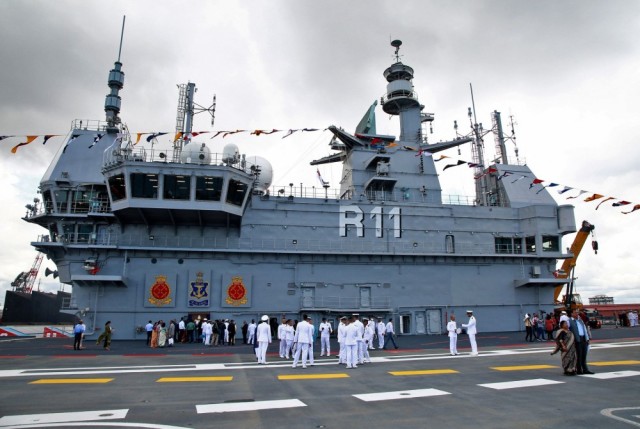
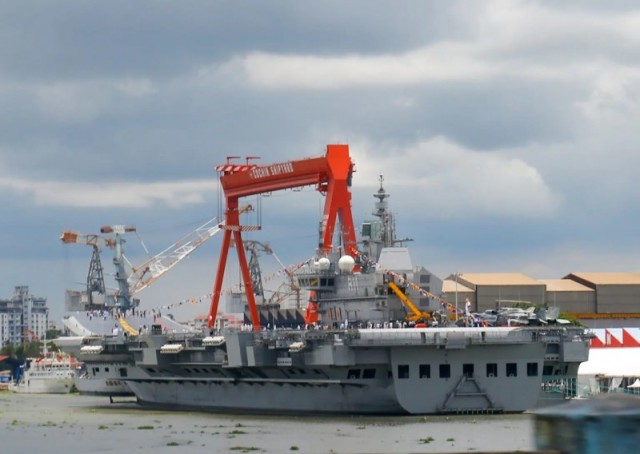
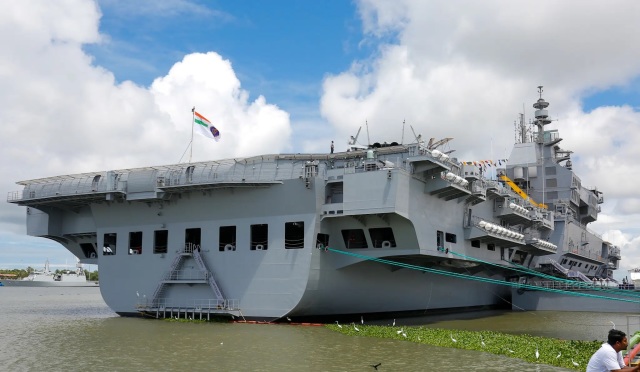
Commissioned by the Indian Navy, the first aircraft carrier of the national Indian construction R 11 Vikrant. Cochin, 02.09.2022 (c) V. Sivaram / Reuters and the Ministry of Defense of IndiaNaval flags of India - from top to bottom: the 1950 model, the 2014 model and the new 2022 model (c) of the Indian Navy
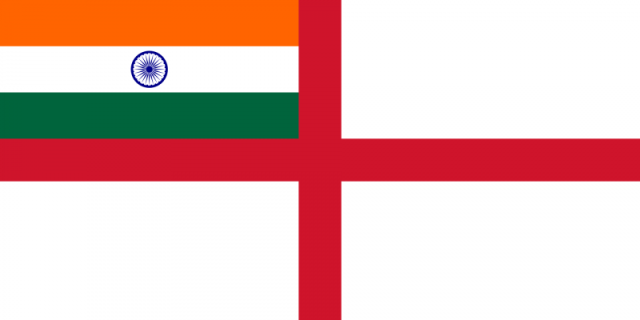
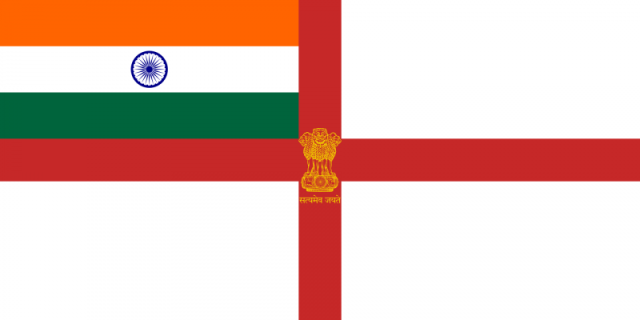
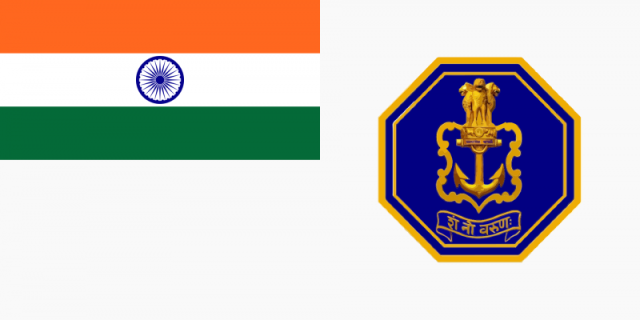
Video:
